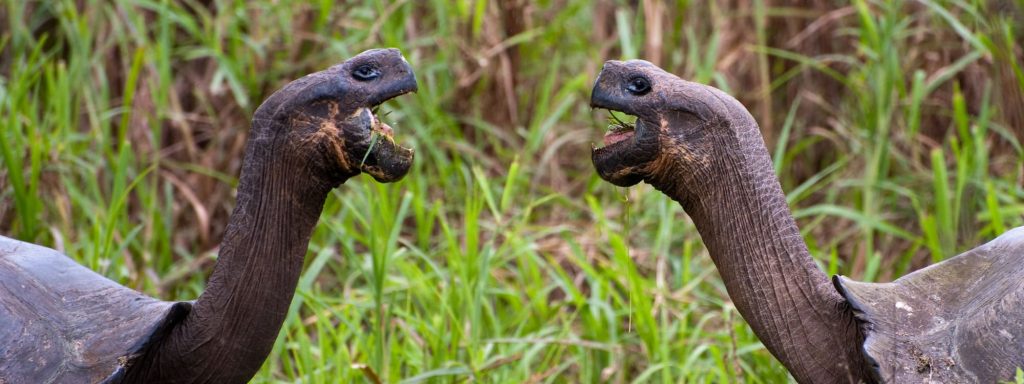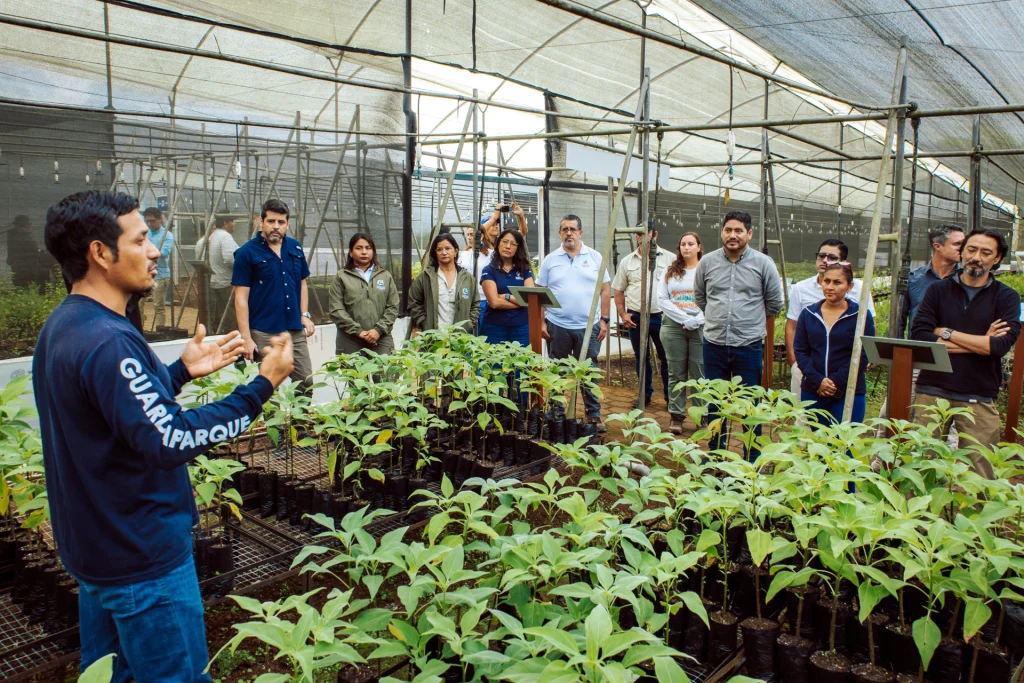A Fragile Landscape for Galápagos Penguins
By Caroline Cappello, PhD Candidate at the University of Washington, Godfrey Merlen, Galápagos Conservationist, and Dee Boersma, Professor at the University of Washington and Director of the Center for Ecosystem Sentinels.
Our research team has traveled to the Galápagos Islands twice a year since 2010 to check natural and constructed nests and study the penguins there. This year, we visited the Islands in February and March to survey Galápagos penguins and to look for an signs of breeding. We found the penguins in excellent condition — many had recently molted, their shiny new feathers indicating that food was recently available. We checked 45 natural nests and 115 of the constructed nests that we built for penguins in 2010. Seven natural nests were active, with contents ranging from newly laid eggs, to eggs ready to hatch, to big chicks close to fledging. Twenty-nine percent of the penguins we counted were juveniles, showing that the penguins bred successfully in the last seven months.
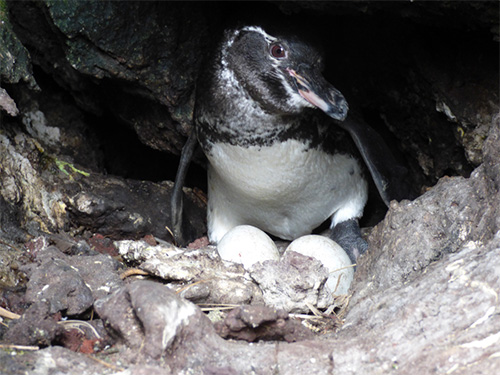
When we think of a nesting penguin, we often imagine soon-to-be penguin parents huddled together on a vast, icy plane, with eggs balanced precariously on their feet. But this image comes from the emperor penguin, an Antarctic relative that lives in a much colder environment than the hot, equatorial Galápagos Islands. For a Galápagos penguin, minimizing the exposure of its eggs and chicks to the intense Galápagos sun is a top priority. To do this, penguins look for tunnels and crevices in the lava where they can lay their eggs. These shady spots keep the penguins cool while providing some protection from native predators like hawks, gulls, and rice rats.
Introduced mammals like cats, dogs, and black and Norway rats can kill penguin eggs, chicks, and even adults. These introduced predators have spread across the coasts of Isabela, Floreana, and other islands, limiting where penguins can safely nest. As a result, the penguins are losing critical nesting habitat. An important, predator-free hotspot for penguin breeding is the Mariela Islands in Elizabeth Bay on the western side of Isabela Island. On these small islets, we frequently find penguins courting, breeding, socializing, and hauling out to spend the night. Of the seven active nests we found during our 2020 trip, five were on the Mariela Islands. These small islets have been an important penguin breeding area for over 50 years.
Unfortunately, nothing lasts forever. These islands are made of fragile scoria lava that, in some places, crumbles at the touch of a hand. These islands are eroding fast — almost every time we visit, the lava rocks have shifted dramatically. For example, over the last ten years, our team watched as two palo santo trees clung, ever more tenuously, to the eroding sides of the Medium Mariela Island. In February 2019, gravity won, and one of the trees fell.

Five months later, on the opposite corner of the island, we found that an entire rock wall had sloughed off into the water, taking several natural nests with it. We estimate that about 50% of the natural nest sites that we studied in the 1970s have been lost to erosion or extreme high tides. Many new natural nests have also formed, but the creation of nests from volcanic and seismic activity does not seem to be keeping up with the loss of habitat due to the combined impacts of introduced predators and erosion.
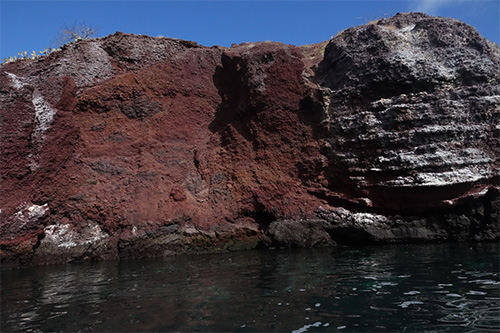
What can we do to stop a natural process like erosion? The answer is, we can’t stop it. Building nests in predator-free areas like the Mariela Islands can help the penguins in the short-to-medium term (28% of all active nests that we’ve found since 2010 have been in constructed sites), but erosion will continue, and more nests will be lost. This is why we must also employ additional, long-term strategies that benefit the penguins. Invasive mammals must be removed from as many of the islands as possible — a monumental task that many organizations are currently working together to achieve. Among the Mariela Islands, a small, artificial island, less prone to erosion, could be built with penguin nesting sites.
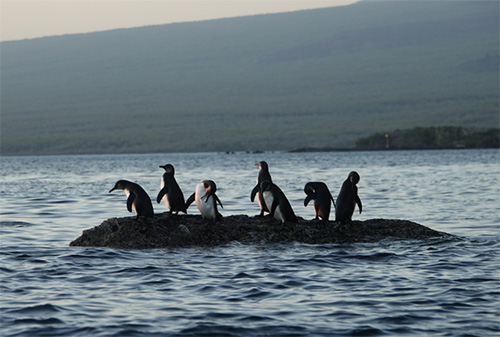
To accomplish these large conservation goals, it will take creativity, funding, and the will of citizens, politicians, and conservation managers. Together we can find innovative solutions, large and small, to help the penguins thrive.
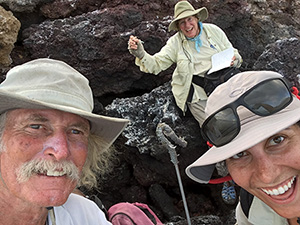
Dr. Dee Boersma is a professor at the University of Washington, Seattle, where she holds the Wadsworth Endowed Chair in Conservation Science and directs the Center for Ecosystem Sentinels. She has studied Galápagos penguins since she began her dissertation research on Fernandina Island in 1970.
Caroline Cappello is a PhD student at the University of Washington studying the ecology and conservation of Galápagos and Magellanic penguins. She began her work with Galápagos penguins in 2015.
Godfrey Merlen is a conservationist, natural historian, boat captain, and Director of Sea Shepherd’s Galápagos office. He has lived in Galápagos since the 1960s and received the Disney Conservation Hero Award in 2015 for his conservation work. This project is a collaboration with Galápagos National Park (permit no. PC-47-10 through PC-65-18) and received funding from Galapágos Conservancy and the David and Lucile Packard Foundation.
Photos by Dee Boersma and Godfrey Merlen
Galápagos Conservancy has been supporting Dr. Boersma’s project to increase the Galapágos penguin population since 2013.
